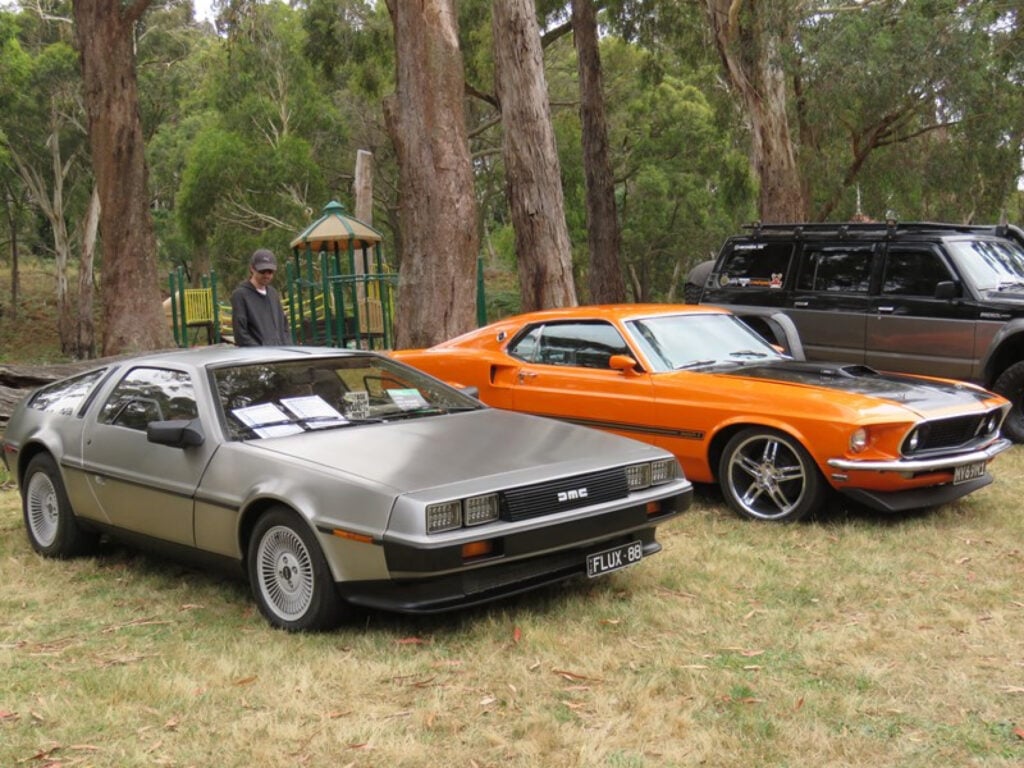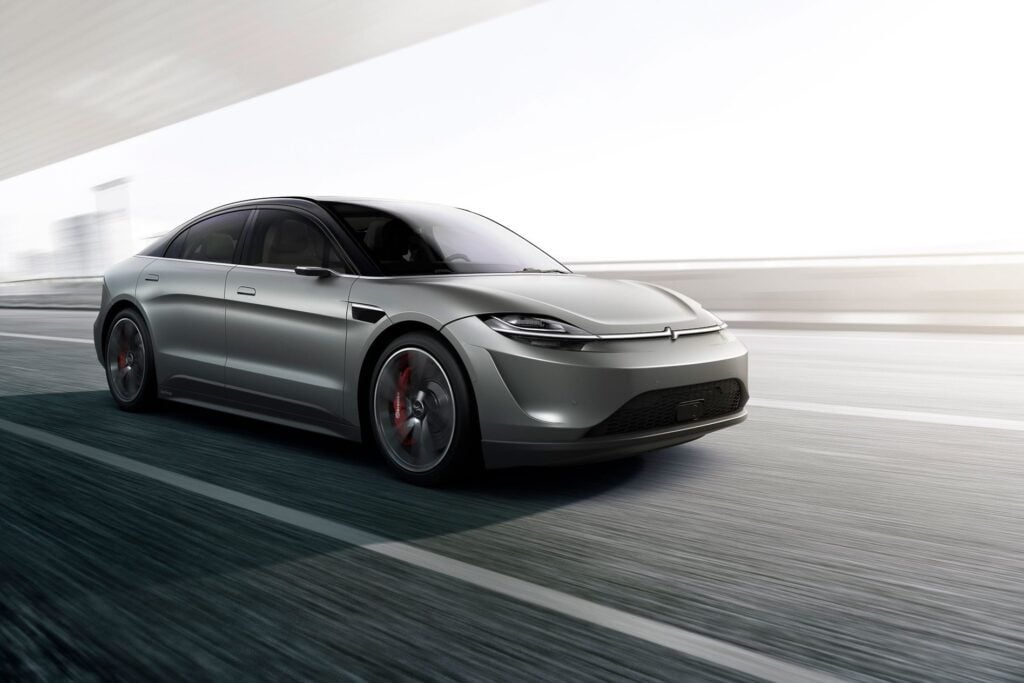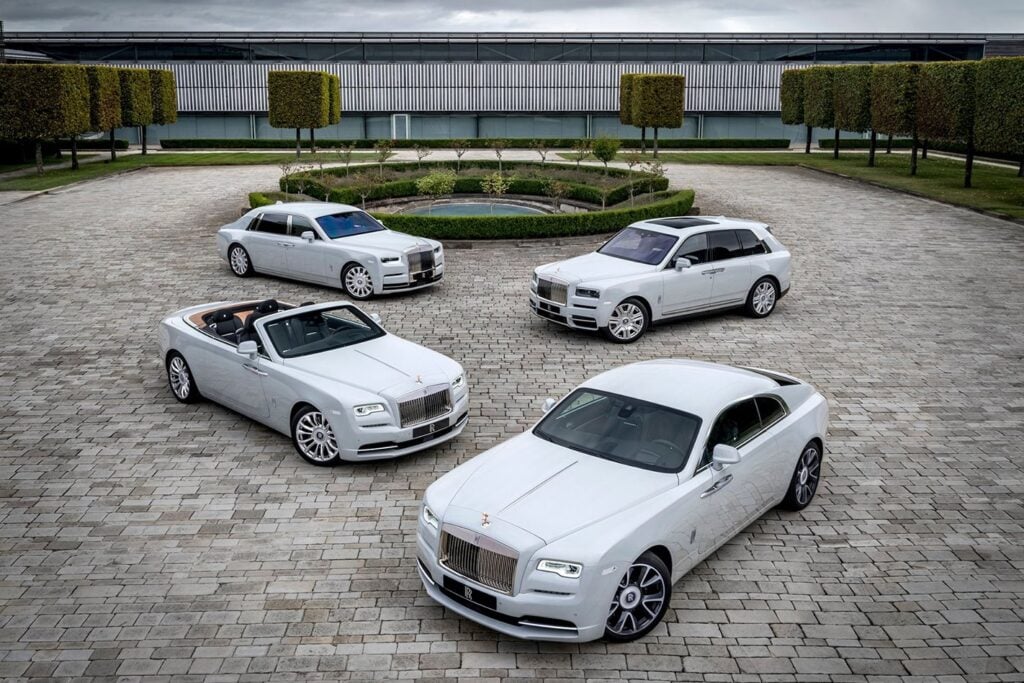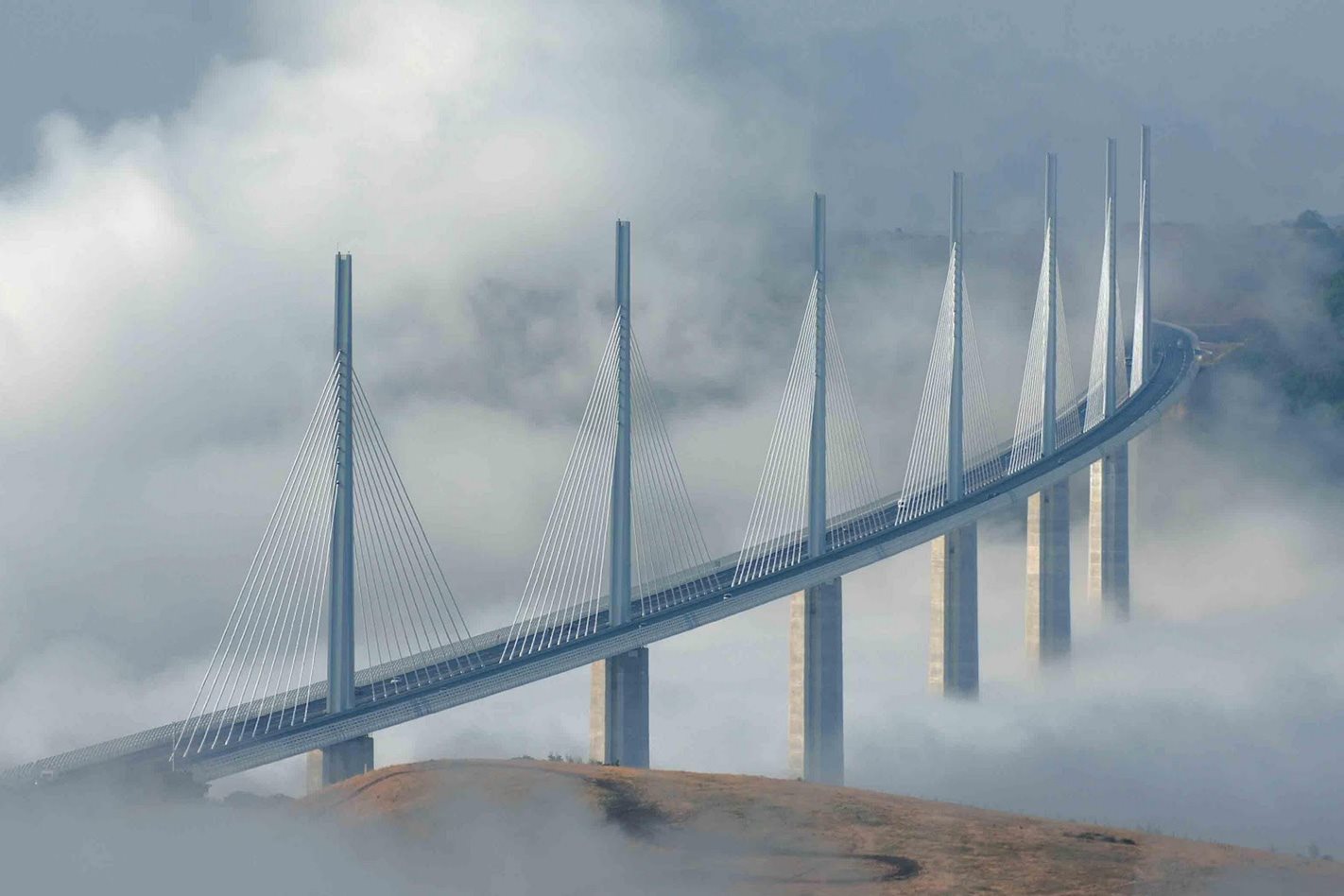
1. CHINESE ROADS High-speed road to ruin.
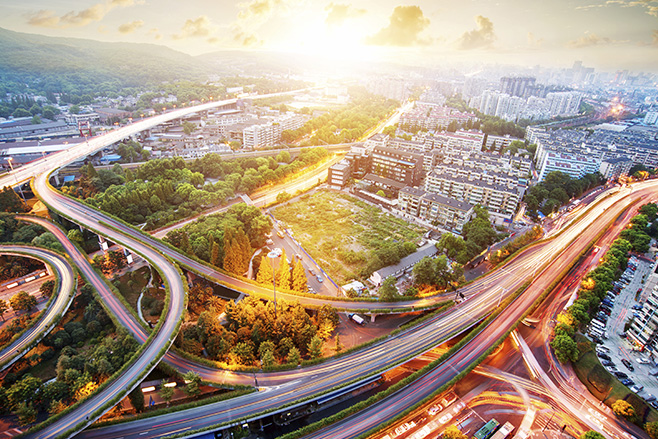
There are many things about China’s massive road network that boggle the mind, but some things stick out because they’d be so unimaginable anywhere else in the world, like the phrase “completed 13 years ahead of schedule”. Not being afraid of working people within millimetres of death helps with that kind of efficiency, of course, but even so, building 12 national highways so far in front of your plans is impressive.
Frankly, it’s surprising that building roads isn’t the thing the Chinese are most famous for because they’ve got 4.3 million kilometres of them. A lot of those are actually goat tracks you wouldn’t send your worst enemy’s car down, but the figure does include an incredible 173,000km of “national-level” roads and 68,000km of full expressways, half of which have been built in the past five years.
And there’s no sign of slowing up – if you wonder where all our mining resources go, the Chinese are driving on them – with the government announcing plans to expand the network to 5.8 million kilometres by 2030.
The staggering thing is that none of this is enough for a population that’s a whopping 65 times bigger than ours. The traffic in Chinese cities is so bad it makes you cry big, black sooty tears. Some of their traffic jams are almost feats of engineering in themselves, including one in 2010 on the Beijing-Tibet highway that lasted for more than 20 days and featured a tailback more than 100km long.
Why we love it
All that road building keeps a lot of people, er, on the streets. And there’s never any real need to get public transport.
Why we laugh
Concerns that China is chewing up most of the world’s resources and continuing the rapacious growth that will doom us all as a life form.
2. THE ORESUND BRIDGE A bridge too far.
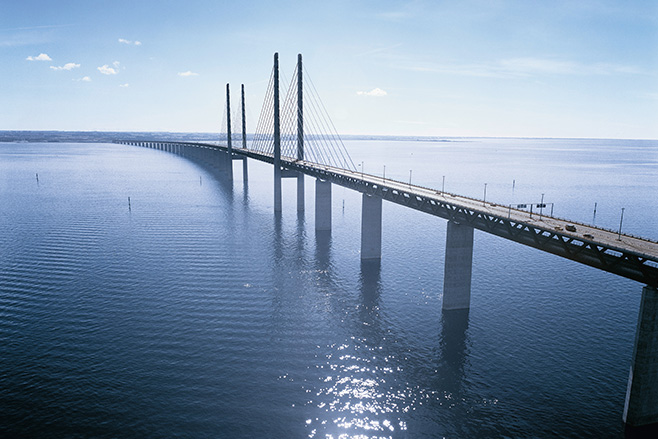
The Sydney Harbour Bridge is an impressive engineering edifice, particularly when you consider it has considerably more lanes than the city’s famously choked M5 tunnel, despite having opened in 1932. But at 1.15km it is, frankly, almost embarrassingly tiddly compared to the Oresund Bridge, which connects not just two disparate parts of one city, but two countries – Sweden and Denmark.
This massive, monolithic bridge is nearly 8km long and stretches from the Swedish coast at Malmo to an artificial island called Peberholm, which was knocked up to sit in the middle of the Oresund Strait and basically have a bridge plonked on it. Cars then drive the rest of the way into Denmark, arriving at the island of Amager, via a no less impressive but visually duller 4km-long tunnel.
The bridge features dual carriageways for cars and a double-track railway, and is the longest road and rail span in all of Europe. It’s also quite beautiful. While most bridges can be a bit dull to drive on, this one is quite an experience (yes, we did it on a Saab launch) because you really feel as if you’re driving through an ocean. But it still looks more impressive from land, with its towering cables.
For an Australian, it’s also a bit of a buzz to be able to drive from one country to another like this. Perhaps we should build a bridge to New Zealand. Or not.
Why we love it
Impressive engineering feat that looks great from just about anywhere but on it. Even Google Earth.
Why we laugh
At one end you’re in Sweden and the other you’re in Denmark. You’ll still want to keep driving, because they’re very slow.
3. WORLD’S BIGGEST VEHICLE The very hungry Caterpillar.
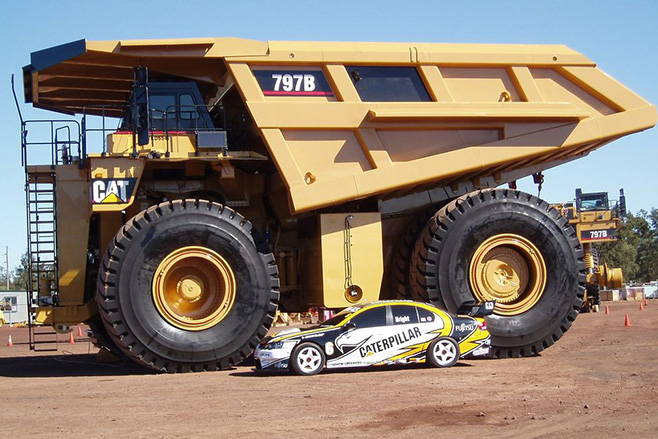
Sure, the road trains that frighten the hell out of tourists in the Northern Territory are large, but they’re like Tonka Trucks compared to the big daddy of them all, the Caterpillar 797F.
The world’s largest truck isn’t something you’ll see on a public road, because it would probably break it, but in the world’s big mines it’s the vehicle of choice, and a staggering piece of engineering.
The 797F can haul a vast 363 tonnes in its tray, stands 15m high and is also 15m long. It weighs a simply baffling 623,700kg and is powered by a 2983kW, single-block, 20-cylinder, electronic common-rail diesel engine through a seven-speed planetary transmission. Filling it up must take a while because the fuel tank holds 7571 litres.
Its six tyres cost $45,000 each, so getting a puncture causes serious swearing. They’d also be a bastard to change, with each one held on by 47 nuts and standing more than 4m tall.
The colossal Caterpillar has to be shipped to a site in bits and requires more than a dozen semi-trailer truck loads to do so. Final assembly is then conducted on site by a team of seven mechanics who work in three shifts around the clock, non-stop, for 20 days.
All this can be yours, if you’re Gina Rinehart or Clive Palmer, for a piddling $US5,000,000. Or more if you spec it up a bit.
Why we love it
You are the king of the road, or would be if they let you drive on public roads. But you can fill the tray with water and stage a moving pool party.
Why we laugh
Fuel bills, maintenance bills, lying awake at night worrying that you’re raping the planet.
4. AUTOSTADT CAR TOWERS A day at the park for Germans.
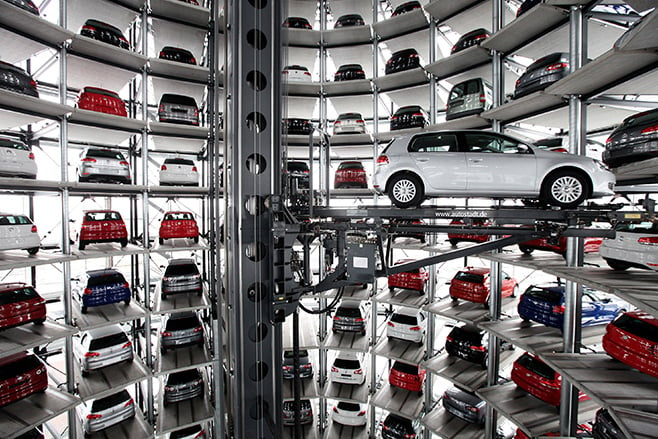
Volkswagen has achieved some towering feats in its time – like getting people to shell out for the New Beetle despite it being a Golf in a silly dress – but making a car park look sexy has to be its most impressive trick.
You can’t actually park your car in the two giant, 60-metre tall towers of glass and steel that loom over the Autostadt visitor centre next to the VW factory in Wolfsburg, but you can collect it from there.
Each tower holds 400 cars and visitors can take a Willy Wonka-style glass elevator to an observation tower on the 20th floor that provides a bird’s-eye view of all those gleaming vehicles, racked and stacked and ready for buying.
An impressive 37 percent of VW buyers in Germany choose to come here to pick up their new cars and they get to watch on a screen as their vehicle is picked up off the end of the line, transported via a conveyor belt and a 700-metre tunnel to the basement of one of the towers, then lifted into place by a giant mechanical arm. It’s then delivered to the excited buyer on the ground floor, having never driven a metre, so there’s a genuine zero on the odometer.
Taking the family to see a giant car park may seem a uniquely German kind of day out, but trust us, it really is quite spectacular, and if you love cars it’s hard not to be moved by the beautiful engineering of it all.
Why we love it
Yes, it’s just showing off really, but it’s showing off done with style, and it’s a pretty cool way to have your new car delivered.
Why we laugh
A ride up in the glass elevator isn’t exactly a Disneyland thrill. Little German kids with tears of boredom in their eyes, but very excited dads.
5. JUDGE HARRY PREGERSON INTERCHANGE Spaghetti junction with meatballs.
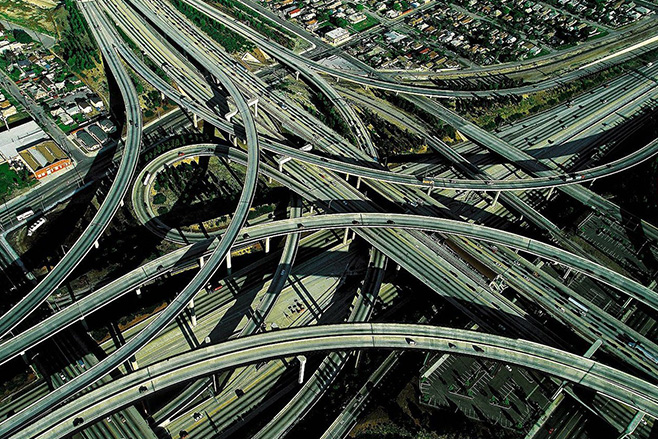
What, you’ve never heard of it? Bet you’ve seen it, though, because this huge and massively complex “stack interchange” near Los Angeles had a starring role in 1994’s seminal movie, Speed.
Yes, this was the under-construction mega-freeway (it opened in 1993) that the bomb on a bus made its jump over with a then unknown Sandra Bullock at the wheel (apparently the bit they jumped over was already finished, though, so a gap was Photoshopped in during the editing).
One of the most tortuously twisted of America’s many spaghetti junctions, the I-105 and I-110 freeways meet at this interchange, which was named after Harry Pregerson, the federal judge who presided over a spectacularly dull lawsuit concerning the construction of the I-105.
Its genius is that it allows traffic entering from all possible directions to negotiate it at freeway speeds, so there’s no need to slow down. This is wonderful in theory, but if you’ve ever driven on either of those super-clogged interstates you’ll know that full speed is often less than 10km/h anyway.
What makes it look even more impressive is that it also carries Metro Green Line tracks, a Harbor Transit busway and High Occupancy Vehicle connector lanes.
The cloverleaf loop, which takes you from the northbound I-110 to the westbound I-105, was thrown in for good luck. Probably.
Why we love it What should be ugly – the meeting of two absurdly wide and rammed roads – somehow manages to look impressive, at least when seen from the air.
Why we laugh It’s supposed to make your trip faster, but there are no fast trips, ever, in Los Angeles, so it’s probably just a huge waste of concrete.
6. MS ULYSSES Driving over troubled waters.
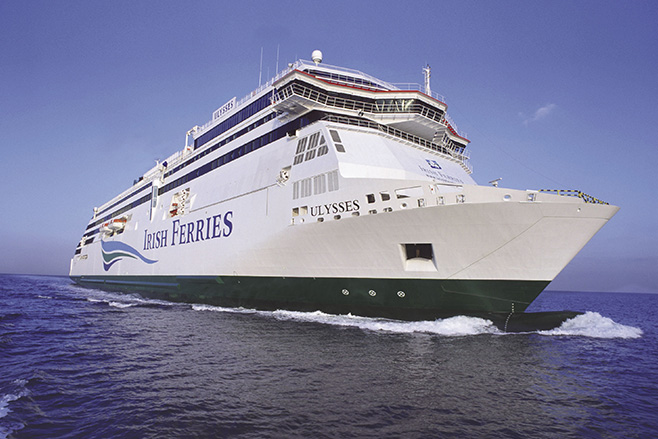
Probably the best thing about living in England is how easy it is to leave.
The world’s busiest airports will fly you to Europe in less than an hour, the Eurostar will train you there through a tunnel, or you can just drive to an Irish pub – in Ireland – for a Guinness, via the world’s largest car ferry, the MS Ulysses.
Launched in 2001, this whoppingly huge ship stands 12 decks (or more than 50 metres) high and can carry 1342 cars, 260 trucks or coaches, and more than 2000 passengers and crew.
The journey from Holyhead in Wales (just a short drive from England) to Dublin takes less than two hours and, perhaps unsurprisingly, most people seem to spend much of that time in the on-board pubs.
What’s fascinating about this car ferry is that its interior is allegedly based on the novel Ulysses by Irish writer James Joyce. If you’ve ever attempted to read it – and no human being is known to have actually finished – you’ll know that this suggests a place designed to confuse and baffle you entirely.
The ship was built by the entirely serious Finns in the Aker Finnyards shipyard, and they must have had a hell of a time getting their heads around the interior.
Why we love it You can get to Ireland, a magical place, quicker than we can get from Melbourne to Tassie by ferry, so you don’t have to attempt to sleep at sea.
Why we laugh The Irish Sea can be one of the most inhospitable stretches of water on Earth, and may cause you to occasionally spill your Guinness.
7. THE ICE ROAD Devil of a track, appropriately 666km long.
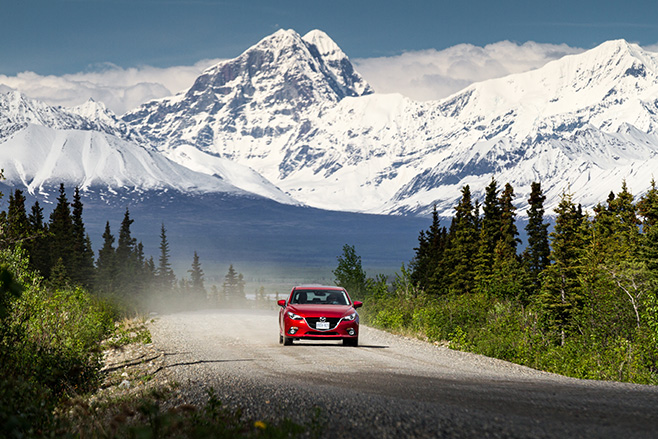
Made famous by one of the most inexplicably popular television shows of all time – surely Ice Road Truckers should have been a one-hour documentary, at best, not a series – and more recently by our own Ged Bulmer, the James W. Dalton Highway is now better known as The Ice Road.
Also referred to as The Haul Road, this 666km stretch of partly paved road is rough as guts and scarier than Lady Ga Ga, and spans Alaska from Fairbanks to the charmingly named Deadhorse.
It was built as a supply road for the Trans-Alaska Pipeline System in 1974 and is notorious as one of the most isolated, and potentially fatal, roads in the world.
Temperatures in winter don’t bear thinking about and huge snowfalls can occur overnight, yet famously it is widely used by trucks, with as many as 160 of them a day rattling along it in summer and 250 a day in winter (just because it’s more challenging then, probably).
It features such enticingly named locations as Oil Spill Hill, Beaver Slide, the Roller Coaster and our personal favourite, Oh Shit Corner.
The appalling road conditions, lack of any proper towns or medical support along the way, and fierce weather mean you need to be slightly bonkers to attempt it at all, even in a sturdy truck. To do it in a Mazda 3, as Bulmer did, requires a whole different level of insanity.
Why we love it In a largely safe world, it’s a chance to really test yourself against the elements, and the scenery is spectacular.
Why we laugh Ice Road Truckers is a terrible TV show, and this road is to blame. Also, if things do go wrong you’re going to die, and die horribly.
8. WEST EDMONTON MALL A day at the maul.

If you had to guess where the world’s largest car park was, you’d probably plump for America, home of all that is unnecessarily large, but you’d be wrong. Close, but wrong.
When it opened in 1981, the amazing West Edmonton Mall in Canadia (which is now the official Australian spelling, thanks, Sir Tony) was the world’s biggest shopping mall, a title it held for 23 years, but even today it still has the largest car park on the planet.
The main parking area has space for 20,000 cars, and at any given moment as many as 1000 people are wandering it aimlessly, wondering whether they’ll ever see their vehicles, or their loved ones, ever again. Concerned that this wouldn’t be enough space, the mall’s big-thinking designers also built an overflow parking area for another 10,000 cars.
The mall itself covers an area equivalent to 48 city blocks, or more than 200,000 square metres, houses more than 800 shops and welcomes 31 million visitors a year.
If you’re planning to visit, set aside some time because it would take three 24-hour days to visit each of its stores, apparently. It also holds records for the largest indoor amusement park, indoor lake, wave pool, bungee tower and triple-loop rollercoaster.
Why we love it
You know how annoying it is when you go to the shops and you can’t find a parking space? That never, ever happens here.
Why we laugh
You may need to hire a team of sherpas to help carry your shopping back to the car – and help you find it.
9. SHUTO EXPRESSWAY Fast and furious Tokyo drifting.
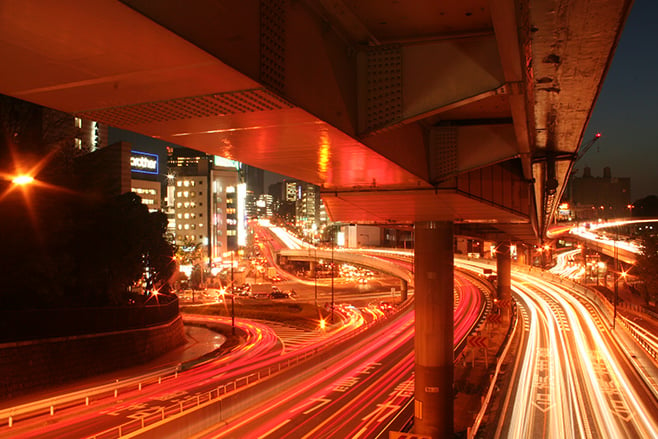
Theoretically, Tokyo simply shouldn’t work; indeed, if you put a population of 36 million people into an area of 13,500 square kilometres anywhere else on the planet, it probably wouldn’t.
Part of the reason the place never grinds to an impassable halt of heaving humanity is that its public transport system makes the rest of the world look like it’s living in the Pre-Cambrian era. Despite that, there are still a staggering 3.8 million cars on this megalopolis’s roads. Sure, the traffic is challenging, to say the least, but the fact that it moves at all is truly miraculous, and partly down to the use of elevated freeways, which were built in the 1960s to improve traffic flow.
The Shuto Expressway is a network of elevated toll roads and tunnels that runs for 280 kilometres, all of it within the greater Tokyo area. It’s an expensive bit of infrastructure, but it effectively doubles the amount of usable road you have to work with, and looks a bit futuristic to boot.
Interestingly, motorcycles with passengers were banned on these expressways for many years, and largely still are.
The Shuto roads are also infamous for hosting street races at night, with bikes and cars tearing around in the early hours at 300km/h plus and generally making a hell of a lot of noise. It’s all very Blade Runner, and very Japanese.
Why we love it Keeps traffic moving, just, and makes use of that stuff every city has still got plenty of – sky. All immaculately paved as well, of course.
Why we laugh: It might be slightly nicer to crawl along at 2km/h on a raised freeway with a view than it is at ground level, but not much.
10. THE MILLAU VIADUCT Getting ahead in the clouds.
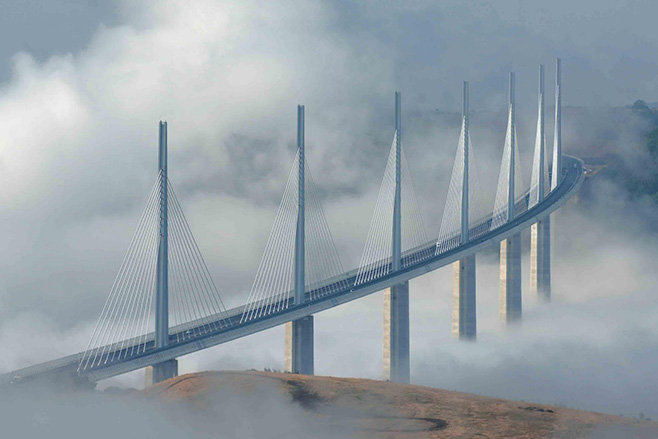
People who are scared of heights are advised not to even look at pictures of the Millau Viaduct, let alone drive on it. The world’s tallest cable-stayed road bridge spans the River Tarn valley in southern France and is surely one of the most impressive engineering feats in human history.
The Viaduct’s tallest tower stands 343 metres, which is higher than the Eiffel Tower and nearly as tall as the Empire State Building. While it’s only 2.5km long, it does soar an imposing 271m above ground level and to drive it is to feel like you’ve finally got your hands on one of those flying cars we’ve been promised for years.
Jointly developed by genius British architect Norman Foster and French engineer Michel Virlogeux, it really is a beautiful thing to behold and was opened in 2004. Incredibly, it took just three years to build and, unlike the Sydney Harbour Bridge, no one died during its construction.
Normally, cable-stayed road bridges are built in sections, then raised into place by cranes, but there weren’t any cranes big enough for the job, so the towers were constructed and the roadways built from each side and then rolled into the centre, a radical technique that created a truly breathtaking bridge.
The route is regularly used by people driving from Paris to Barcelona for summer holidays. Lucky gits.
Why we love it
A staggering achievement and a wondrous experience to drive over, it’s a case of architecture as art.
Why we laugh
You really wouldn’t want to have an accident and spear off the side.
11. LAERDAL TUNNEL It’s Norway or the highway.
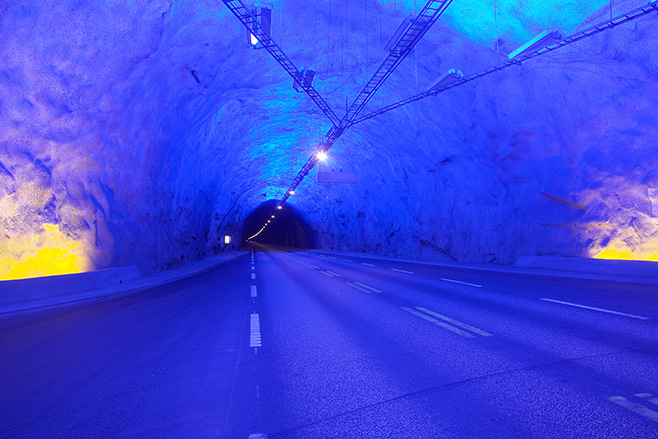
Imagine a tunnel so big that it takes 20 minutes to drive through, so long that it has caves along the way so you can take a break, and hopefully calm your creeping claustrophobia. That would be the Laerdal Tunnel in Norway, the world’s longest road tunnel at 24.51 kilometres.
The tunnel is divided into four sections, with three large caves at six-kilometre intervals. The caves have blue lights with yellow highlights at the fringes, in contrast to the white ones in the main tunnel, with the aim of giving an impression of sunrise – i.e. don’t worry, frightened driver, you will see the sun again eventually.
The caves are there to break up the daunting drive and allow drivers to stop and rest, or just totally freak out if they prefer.
It took five years, starting in 1995, to build this vast subterranean passage and more than 2.5 million cubic metres of rock was removed during its construction. The cost was a relatively reasonable $125 million.
As you might guess, there are no emergency exits and if something goes wrong you’re basically going to be toast. Apparently some idiots thought it would be a fun place to drive very quickly and listen to their booming exhausts, so speed cameras were recently installed, which seems a shame.
Why we love it Definitely a unique experience and probably not that weird for the locals, who live in the dark most of the year anyway.
Why we laugh A bit like living in a giant colon for a little while, possibly the worst nightmare of anyone who’s even a tiny bit claustrophobic.
12. JERRY SEINFELD’S GARAGE A space about more than nothing.
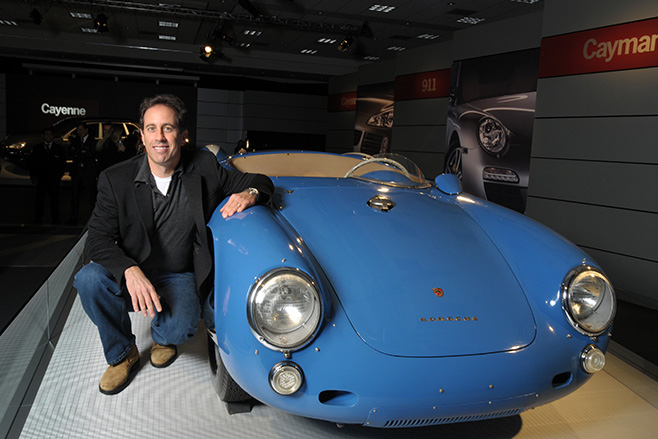
The internet is awash with “world’s greatest garage” slideshows, featuring flights of fantasy that often exist only in the minds of desperate web-page editors, but one stunning garage that’s definitely real is the very private $1.4 million space belonging to renowned car nut and TV funnyman Jerry Seinfeld.
Real estate in New York is not cheap, even on the Sydney scale, but that didn’t stop Jerry buying a property a few blocks from his mansion on Central Park West and turning it into a three-level, subterranean Bat Cave.
It reportedly includes an elevator, quite of a few of his 46 – you read that right – Porsches and an 844-square-foot living space featuring a club room with pool table, kitchen, bathroom and a huge office.
Remember, the TV squillionaire doesn’t live there, he just hangs out there sometimes to look at his $US15m car collection, which includes a 959, Carrera GT and a 1955 550 Spyder (above), just like the one James Dean checked out in, as well as the first 911 ever made. And the actual 917 Steve McQueen drove in the film Le Mans. Did we mention the guy likes Porsches?
And when he’s not in this temperature-controlled car palace, he apparently has a video connection so he can look at his cars – live – on his phone whenever he’s away in Vegas, doing a few shows to add to his estimated $US800 million net worth.
Why we love it
Absolutely everything. If this isn’t the ultimate man cave, what is? Besides, you’re Jerry Seinfeld. Life is good.
Why we laugh
Drive out of this magical garage and you’re stuck with some of the world’s worst traffic, and harassed by the general public.
This article was originally published in Wheels August 2015.

